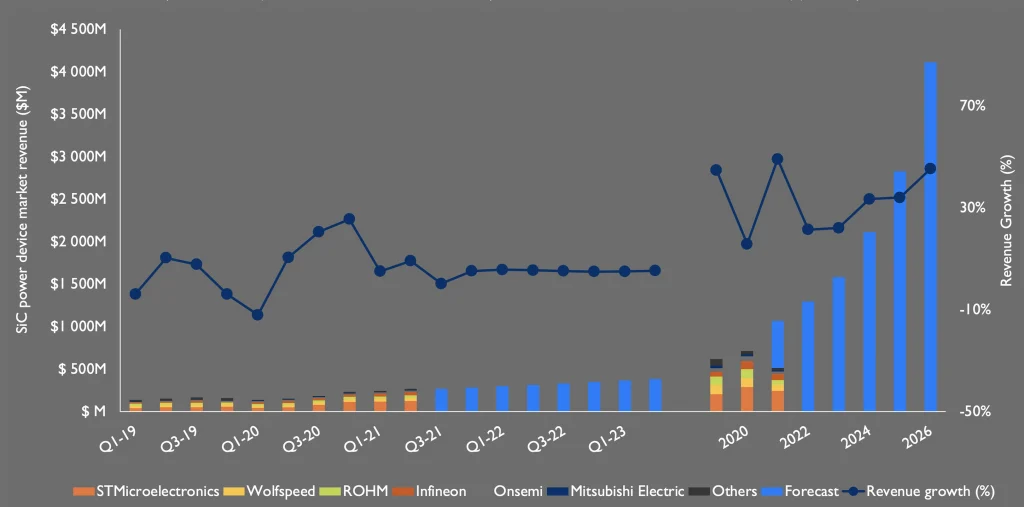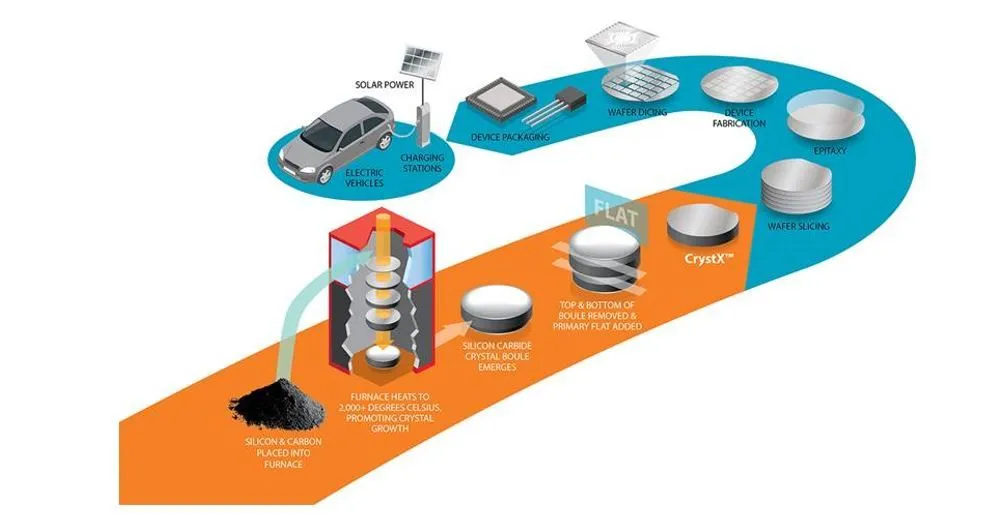Market Review
The global silicon carbide power semiconductor market was valued at US$628.72M in 2020 and is expected to reach US$4708.71M by 2026, which means a CAGR of 42.41% from 2021 to 2026.
The outbreak of the pandemic has caused economic turmoil for small, medium and large businesses around the world. Adding to the woes, country lockdowns imposed by governments around the world (to minimize the spread of the virus) have also caused industries to be hit and supply chain and manufacturing operations disrupted around the world, to a large extent manufacturing involves working in production floors where people are in close contact, collaborating to increase productivity.

SiC (silicon carbide) is used for high power applications due to the wide band gap offered. Although there are various polytypes (polymorphs) of SiC, 4H-SiC is the most ideal for power applications. The expansion of R&D activities aimed at expanding the capabilities of materials is expected to give a strong impetus to the growth of the market. For example, the U.S. Department of Energy Advanced Research Projects Agency (ARPA-E) has announced $30 million in funding for 21 projects under the “Create Innovative and Reliable Circuits Using Innovative Topologies and Semiconductors” (CIRCUITS) program. . In addition, initiatives such as the US Department of Energy’s investment in NREL-led research to reduce the cost of manufacturing silicon carbide power electronics could further support these trends and expand the scope for more reliable silicon carbide devices.
Electric vehicles provide certain advantages in the automotive industry such as increased range, charging time and performance to meet customer expectations. However, they require power electronic devices capable of operating efficiently and effectively at elevated temperatures. Consequently, power modules are designed using wide-gap SiC technologies.

Nowadays, electric cars are becoming commonplace on the roads, prices are dropping, and range is increasing. According to the International Energy Agency’s Global EV Outlook 2021 report, there were more than 10.2 million light duty electric passenger vehicles on the road in 2020. In addition, electric vehicle registrations increased by 41% in 2020, creating room for market growth.
Semiconductors also use SiC to reduce energy losses and extend the life of solar and wind power converters. For example, photovoltaic power mainly requires high power, low losses, fast switching, and reliable semiconductor devices to improve efficiency, power density, and reliability. Thus, SiC devices provide a promising solution for photovoltaic energy needs to meet the growing demand for energy.
To unlock the potential associated with clean technology demand, several players are entering the SiC power semiconductor market. For example, in April 2021, NoMIS Power Group, a subsidiary of the State University of New York Polytechnic Institute (SUNY Poly), announced that it plans to develop, manufacture, and market SiC-based power semiconductor devices, modules, and services to provide support for control product developers. food.
In addition, parasitic capacitance and inductance become too large as soon as high frequencies are used, preventing the SiC power device from reaching its full potential. In this regard, the widespread use of silicon carbide may require an upgrade in production capacity, which is not possible at the current pace of development.
Report scope
SiC (silicon carbide) is a composite semiconductor composed of silicon and carbide. SiC provides a number of advantages over silicon, including a 10-fold reduction in electric field strength, a 3-fold increase in band gap, and a wider range of p- and n-type control required for device design. The market research categorizes the market by providing detailed information on SiC applications in various end-user industries such as automotive, consumer electronics, information technology and telecommunications, energy, industrial, military, and aerospace. The market research also provides a brief insight into its opportunities and challenges in several geographic regions. It also provides an assessment of the impact of COVID-19 on the market.
